![If you donât know the fable of the tortoise and the hare, Iâll make a long story short: Thereâs this wise-guy rabbit who constantly pokes fun at this turtle for moving so slowly. The turtle, fed up with the nonstop needling, challenges the rabbit to a race. The bunny rockets off the starting line, leaving the turtle in his wake. The cocky rabbit figures, âIâm so far ahead, Iâve got time for a nap before I finish the race.â But the rabbit oversleeps and awakens to find the turtle has already crossed the finish line. The moral of the story: Slow and steady wins the race.
<p>
Bill Lowen has gone by the nickname âTurtleâ since he was a kid. âIt started out as a reverse nickname, like you might call a tall guy âShorty,ââ he recalled. âI was always the first to show up for a game or whatever, so my buddies started calling me Turtle.â The nickname has stuck with Lowen to this day, but for different reasons. âMy wife says itâs because I stick my neck out [to help friends]. Guys on the B.A.S.S. tour call me Turtle because when theyâre making a zillion casts an hour, Iâm usually fishing r-e-a-l slow.â As âTurtleâ Lowen proved during his cold, drizzly December outing on Lake M, slow and steady does indeed win the race for big winter bass.
<p>
<b>6:37 a.m.</b> Lowen and I arrive at Lake Mâs deserted launch area. Itâs 39 degrees and misting rain. We don foul-weather gear and Lowen pulls an arsenal of Castaway rods paired with Lewâs reels from his boatâs storage locker. What mode does he expect bass will be in today? âI expect theyâll be on a classic winter pattern, near points and pockets with a deep-water access. The water will be cold and the bass may be lethargic, but winter is a great time to catch a lunker bass, so Iâll stick with presentations that Iâm confident will catch big fish.â Lowen suddenly realizes heâs left both his sunglasses and his belt in his motel room. âItâs so gloomy today, I may not miss the sunglasses; Iâm more worried about keeping my pants up.â
<p>
<b>7 HOURS LEFT</b><br>
<b>7 a.m.</b> We launch Lowenâs boat. He checks the water temp: 47 degrees. âThis lake has some tannic color, but itâs clear enough for jerkbaits. Bass often suspend in winter, and theyâll hit a jerkbait when itâs suspending dead still in the water column. Iâll also throw a flat-sided crankbait; these have a much tighter wobble than fat-bodied crankbaits. And Iâve got jigs and tubes tied on for probing brushpiles.â<br>
<b>7:06 a.m.</b> Lowen begins his day by idling around Lake Mâs lower end, looking for channel swings, submerged rockpiles and isolated cover on main-lake points with his electronics. <br>
<b>7:18 a.m.</b> Lowen runs uplake and stops abruptly when his lower unit hits a shallow stump. âWow, this point runs halfway across the lake! I like to fish stumps, but thatâs a rough way to locate them.â <br>
<b>7:31 a.m.</b> His outboard apparently unscathed, Lowen continues idling and looking. âNormally bass will move to the last section of deep channel uplake in winter, but Iâm not seeing any significant depth change up here at all. Itâs just flat, shallow sand banks.â<br>
<b>7:42 a.m.</b> Lowen has stopped in front of a shallow cove. He makes his first casts of the day with a chartreuse/brown back PH Custom Lures Skinny P flat-sided balsa crankbait. âThis bait runs about 6 feet deep. Flat-sided crankbaits donât deflect the same way squarebills do; you have to âfeelâ them across the bottom with a very slow retrieve. Most guys fish them way too fast.â The lure is running off-kilter; Lowen adjusts it by gently tuning the line tie. âIf itâs running to the right, bend the line tie very slightly to the right, and vice versa. Just the slightest tweak will usually fix it.â<br>
<b>7:51 a.m.</b> Lowen cranks a series of shallow secondary points.<br>
<b>7:58 a.m.</b> Lowen idles to a longer point and resumes cranking. âThis lake has been drawn down to winter pool. Thereâs a ton of brush and stumps left high and dry.â
<p>
<b>6 HOURS LEFT</b><br>
<b>8:04 a.m.</b> Lowen moves to a main-lake point to try a Smithwick Rogue jerkbait, custom painted blue with a chartreuse and orange belly. A bass bumps the lure but doesnât hook up.<br>
<b>8:06 a.m.</b> Lowen is trying alternate retrieves with the jerkbait. âFiguring out what it takes to get a sluggish, suspending bass to strike takes some experimentation.
Sometimes they want hard jerks and short pauses; other times they want lighter jerks and longer pauses.â<br>
<b>8:13 a.m.</b> Lowen switches to an Ima Flit 120 jerkbait in the same custom color. âThe Flit gets down a little deeper than the Rogue.â<br>
<b>8:19 a.m.</b> Lowen catches his first bass of the day, a nonkeeper, on the Flit. âHe hit halfway back to the boat.â<br>
<b>8:25 a.m.</b> Lowen moves around the point into a cove but quickly runs out of fishable depth. âThereâs no water at all back here since the drawdown.â<br>
<b>8:28 a.m.</b> Lowen hangs the jerkbait in a submerged limb, retrieves it and reties. âIâm only using Â10-pound line, and since jerkbaits are lunker lures, even the slightest nick could cost me a big fish. In a tournament, the few seconds it takes to retie could make a big difference in your paycheck.â](http://www.bassmaster.com/wp-content/uploads/2019/11/07-42_dotl_lowen2.jpg)
Bill Lowen has gone by the nickname âTurtleâ since he was a kid. âIt started out as a reverse nickname, like you might call a tall guy âShorty,ââ he recalled. âI was always the first to show up for a game or whatever, so my buddies started calling me Turtle.â The nickname has stuck with Lowen to this day, but for different reasons. âMy wife says itâs because I stick my neck out [to help friends]. Guys on the B.A.S.S. tour call me Turtle because when theyâre making a zillion casts an hour, Iâm usually fishing r-e-a-l slow.â As âTurtleâ Lowen proved during his cold, drizzly December outing on Lake M, slow and steady does indeed win the race for big winter bass.
6:37 a.m. Lowen and I arrive at Lake Mâs deserted launch area. Itâs 39 degrees and misting rain. We don foul-weather gear and Lowen pulls an arsenal of Castaway rods paired with Lewâs reels from his boatâs storage locker. What mode does he expect bass will be in today? âI expect theyâll be on a classic winter pattern, near points and pockets with a deep-water access. The water will be cold and the bass may be lethargic, but winter is a great time to catch a lunker bass, so Iâll stick with presentations that Iâm confident will catch big fish.â Lowen suddenly realizes heâs left both his sunglasses and his belt in his motel room. âItâs so gloomy today, I may not miss the sunglasses; Iâm more worried about keeping my pants up.â
7 HOURS LEFT7 a.m. We launch Lowenâs boat. He checks the water temp: 47 degrees. âThis lake has some tannic color, but itâs clear enough for jerkbaits. Bass often suspend in winter, and theyâll hit a jerkbait when itâs suspending dead still in the water column. Iâll also throw a flat-sided crankbait; these have a much tighter wobble than fat-bodied crankbaits. And Iâve got jigs and tubes tied on for probing brushpiles.â7:06 a.m. Lowen begins his day by idling around Lake Mâs lower end, looking for channel swings, submerged rockpiles and isolated cover on main-lake points with his electronics. 7:18 a.m. Lowen runs uplake and stops abruptly when his lower unit hits a shallow stump. âWow, this point runs halfway across the lake! I like to fish stumps, but thatâs a rough way to locate them.â 7:31 a.m. His outboard apparently unscathed, Lowen continues idling and looking. âNormally bass will move to the last section of deep channel uplake in winter, but Iâm not seeing any significant depth change up here at all. Itâs just flat, shallow sand banks.â7:42 a.m. Lowen has stopped in front of a shallow cove. He makes his first casts of the day with a chartreuse/brown back PH Custom Lures Skinny P flat-sided balsa crankbait. âThis bait runs about 6 feet deep. Flat-sided crankbaits donât deflect the same way squarebills do; you have to âfeelâ them across the bottom with a very slow retrieve. Most guys fish them way too fast.â The lure is running off-kilter; Lowen adjusts it by gently tuning the line tie. âIf itâs running to the right, bend the line tie very slightly to the right, and vice versa. Just the slightest tweak will usually fix it.â7:51 a.m. Lowen cranks a series of shallow secondary points.7:58 a.m. Lowen idles to a longer point and resumes cranking. âThis lake has been drawn down to winter pool. Thereâs a ton of brush and stumps left high and dry.â
6 HOURS LEFT8:04 a.m. Lowen moves to a main-lake point to try a Smithwick Rogue jerkbait, custom painted blue with a chartreuse and orange belly. A bass bumps the lure but doesnât hook up.8:06 a.m. Lowen is trying alternate retrieves with the jerkbait. âFiguring out what it takes to get a sluggish, suspending bass to strike takes some experimentation.
Sometimes they want hard jerks and short pauses; other times they want lighter jerks and longer pauses.â8:13 a.m. Lowen switches to an Ima Flit 120 jerkbait in the same custom color. âThe Flit gets down a little deeper than the Rogue.â8:19 a.m. Lowen catches his first bass of the day, a nonkeeper, on the Flit. âHe hit halfway back to the boat.â8:25 a.m. Lowen moves around the point into a cove but quickly runs out of fishable depth. âThereâs no water at all back here since the drawdown.â8:28 a.m. Lowen hangs the jerkbait in a submerged limb, retrieves it and reties. âIâm only using Â10-pound line, and since jerkbaits are lunker lures, even the slightest nick could cost me a big fish. In a tournament, the few seconds it takes to retie could make a big difference in your paycheck.â
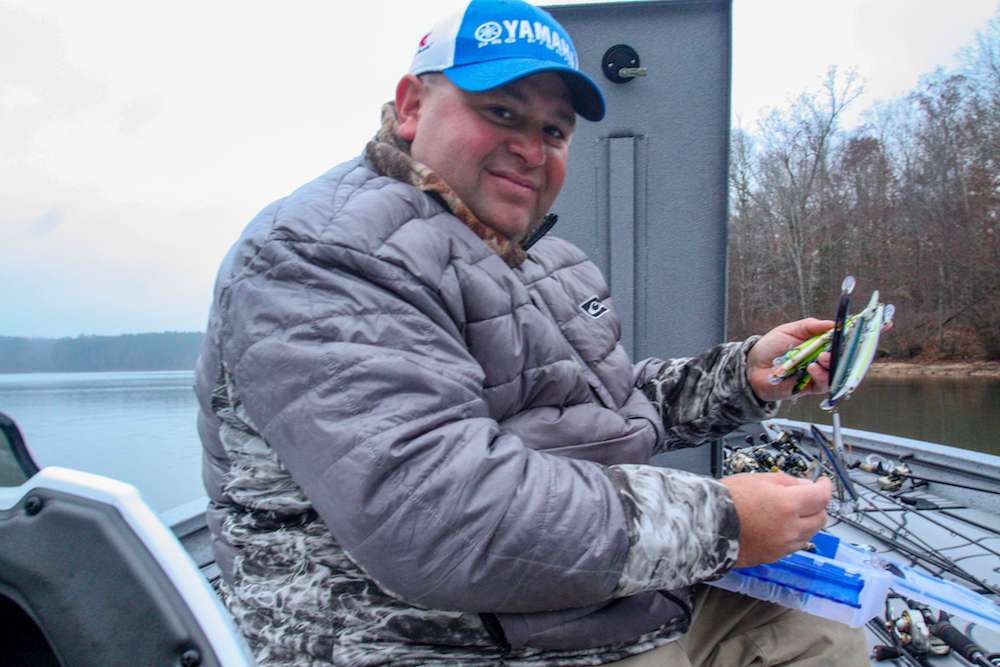
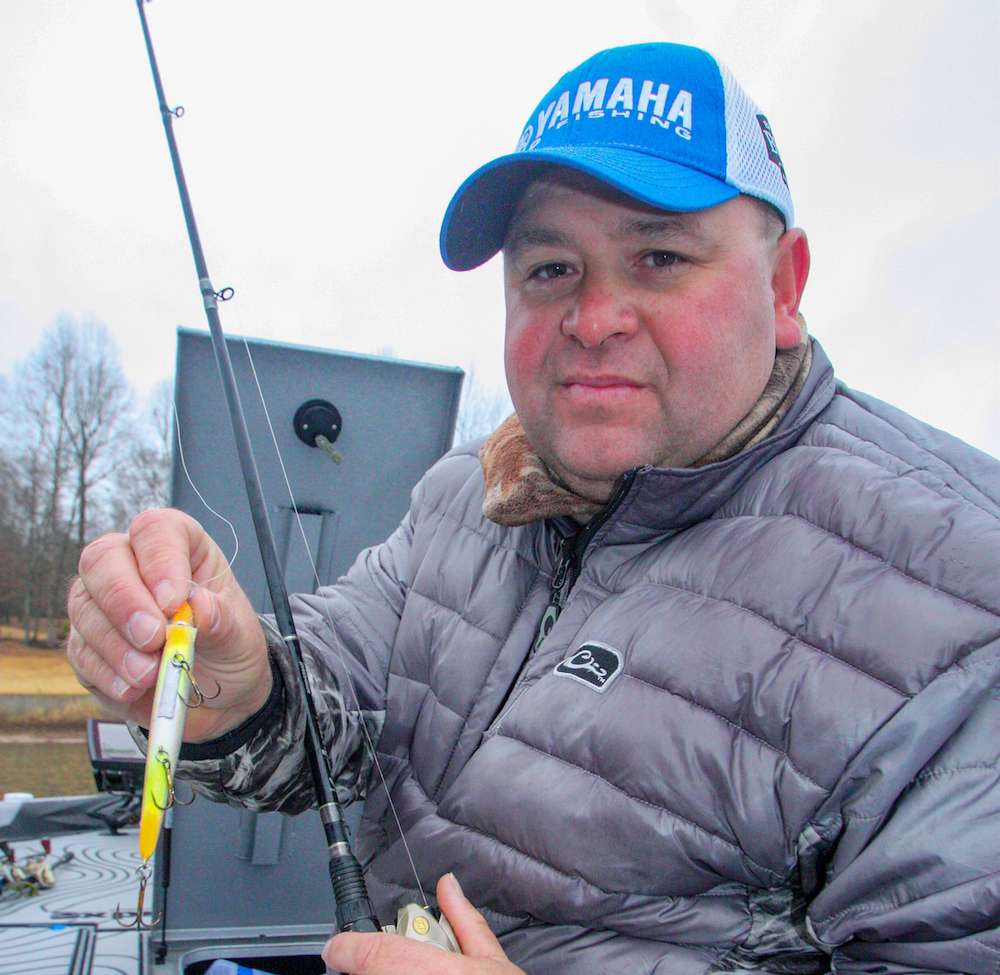
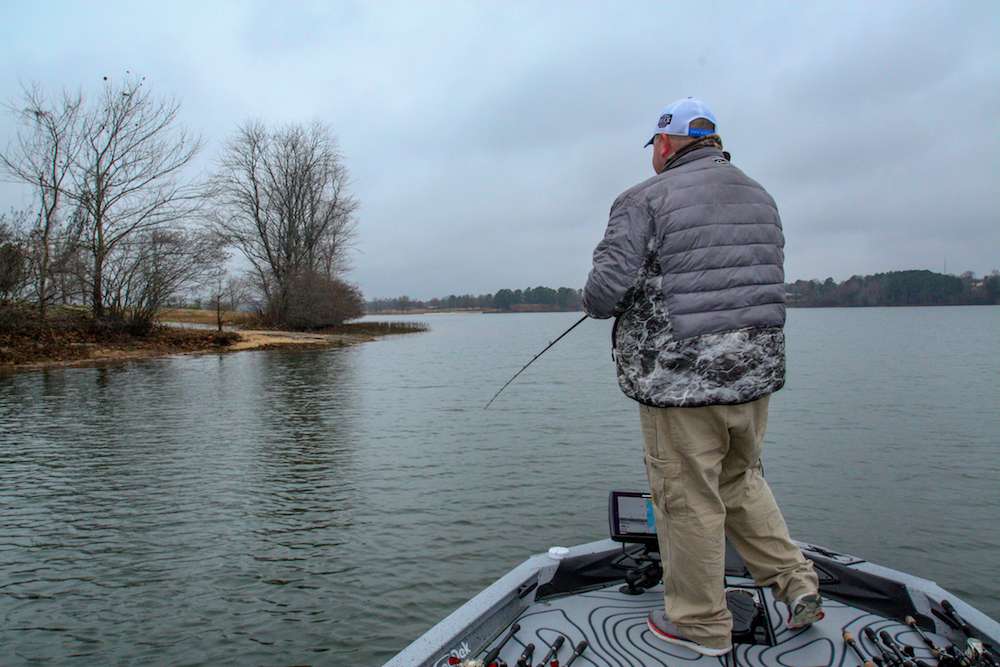
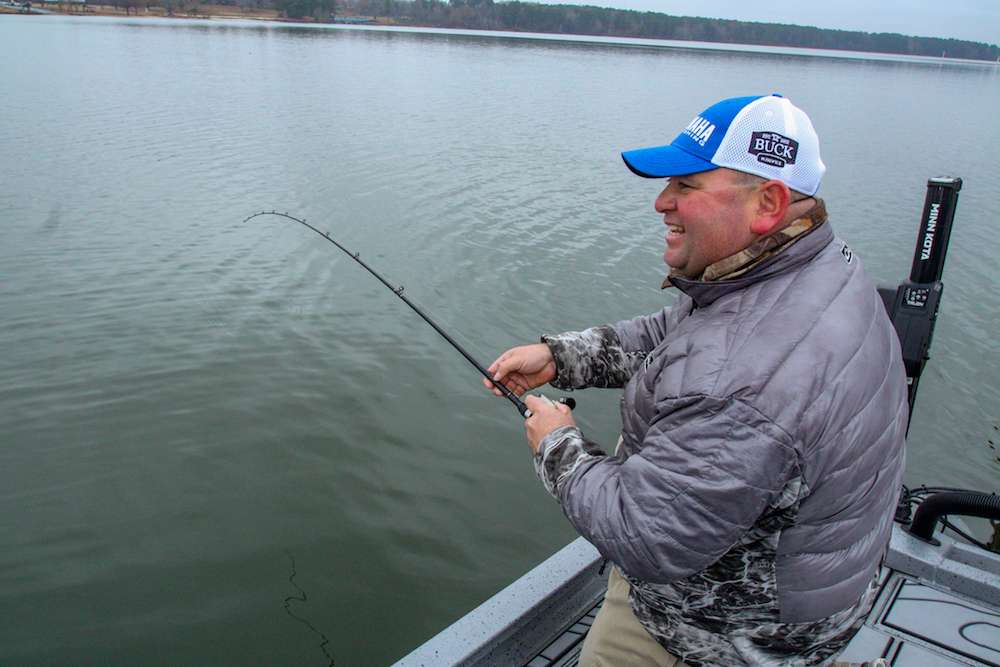
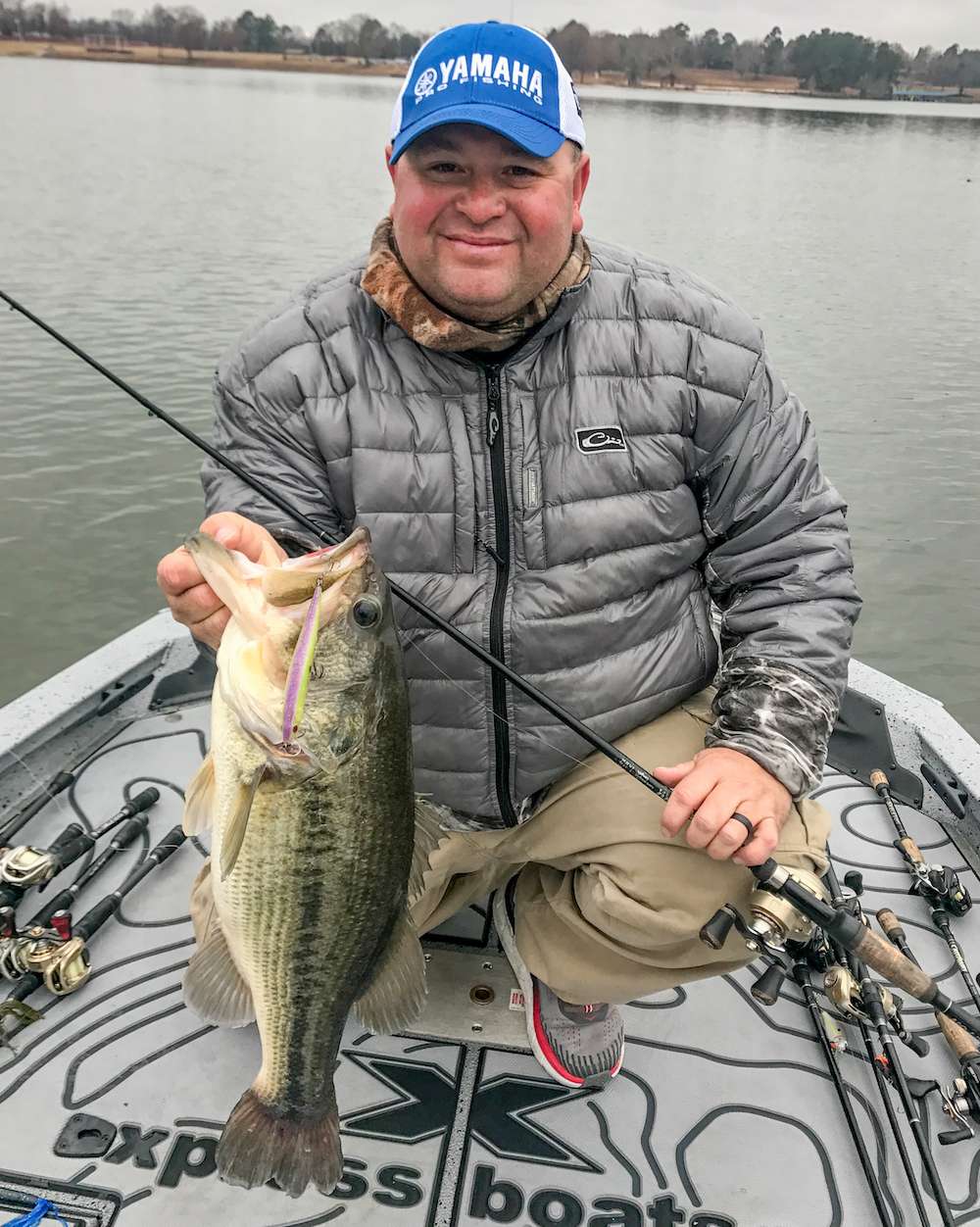
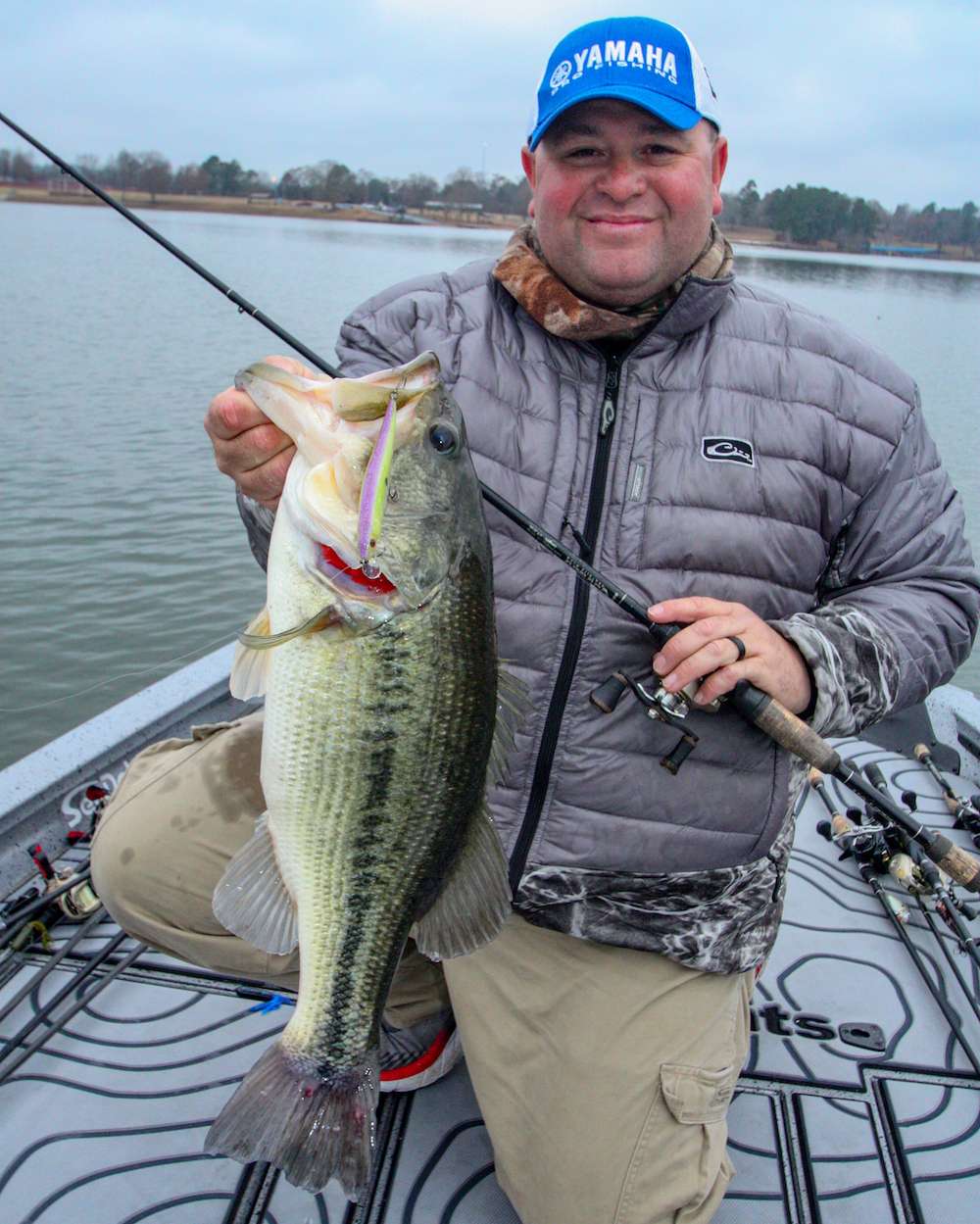
4 HOURS LEFT10 a.m. Lowen is regrouping after boating the lunker bass. I ask him about his jerkbait rod. âItâs actually a spinnerbait rod â Â6-10 with a soft tip, but with some backbone to handle a big fish. I donât like a super-ânoodlyâ rod for jerkbaits.â10:05 a.m. Back in the game, Lowen again casts the Vision 110 to the point. âThat fish hit after a Â15-second pause. Itâs not easy letting it sit that long when youâre jacked up like I am!â A fish bumps the jerkbait but doesnât hook up. 10:14 a.m. Another bump on the jerkbait. Lowen switches to an Ima Flit in the same color.10:30 a.m. The point has thus far failed to yield another fish. Whatâs Lowenâs take on the day so far? âItâs been real slow, but the jerkbait finally paid off with a really big fish. You just canât fish fast in these cold winter conditions! Iâm going to run some more points and keep keying on deep-water accesses.â10:36 a.m. Lowen shifts gears and pitches a Texas-rigged green pumpkin Strike King tube to a submerged brushpile. 10:48 a.m. He cranks the Skinny P slowly across a sunken log.10:57 a.m. Lowen cranks a series of docks with the Skinny P.
3 HOURS LEFT11 a.m. Lowen switches to his signature PH Custom Lures Dollar Bill flat-side in the chartreuse mudbug pattern. âThis crankbait has a slightly wider wobble than the Skinny P.â He bags a short fish off a dock on his first cast.11:02 a.m. âTurtleâ bags another shorty on the Dollar Bill. âThose two would be keepers in Major League Fishing!â11:11 a.m. Lowen has moved into a pocket near the dam and hauls water with the Dollar Bill.
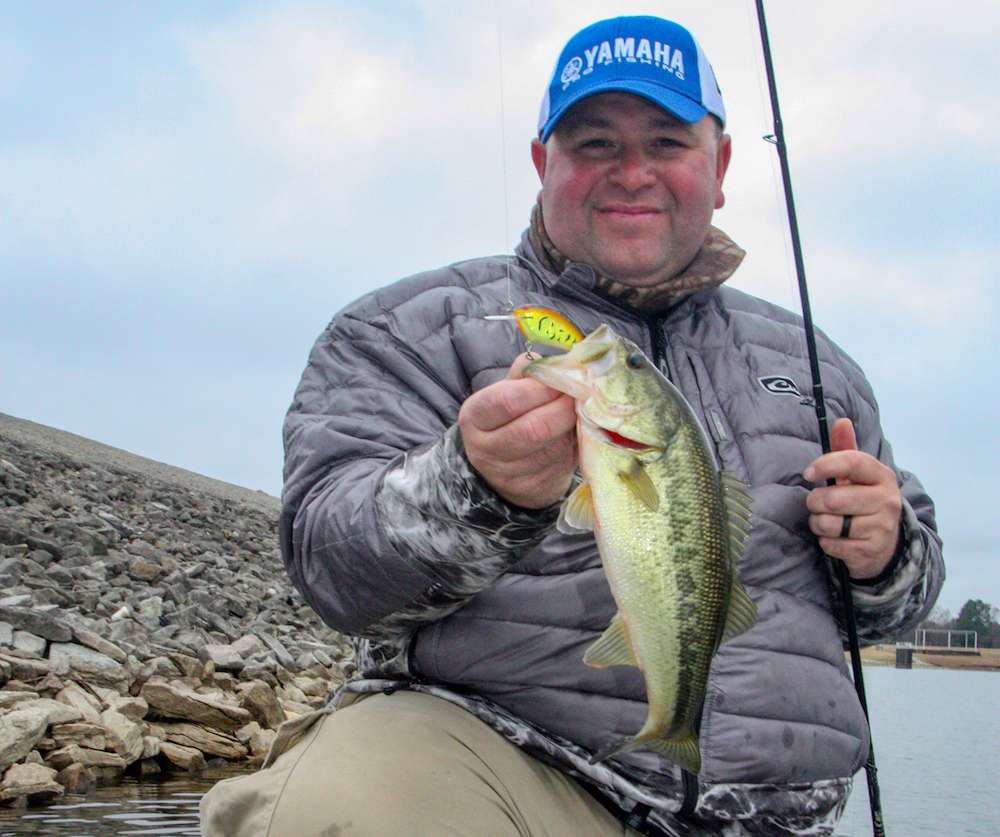
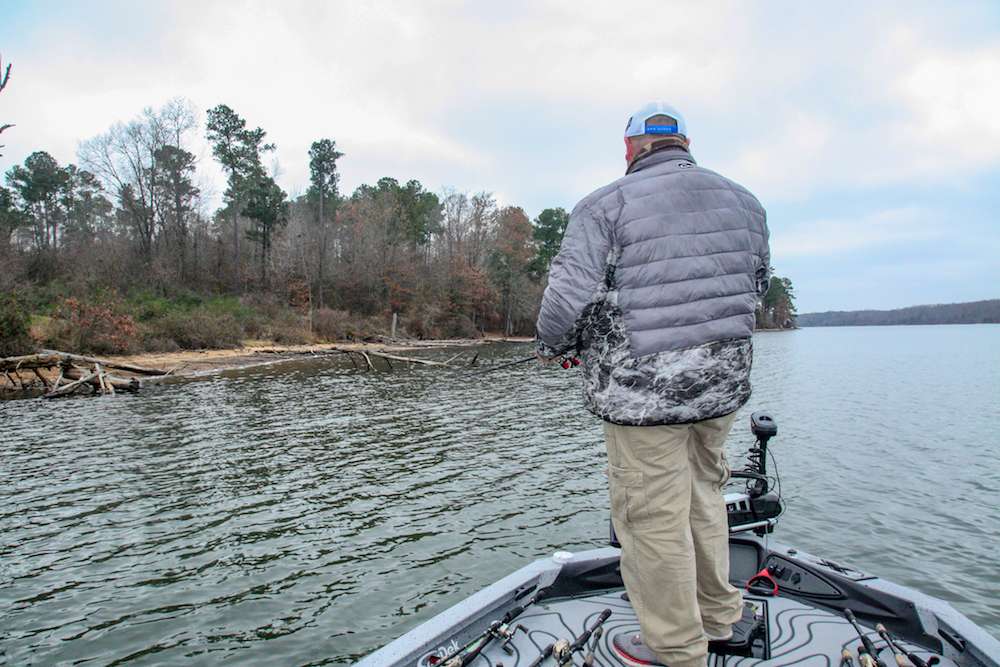
2 HOURS LEFT12:01 p.m. Still jerkbaiting the steep bank. 12:13 p.m. Lowen makes a short hop uplake to a sand point and tries the Vision 110. No takers here. âThe points uplake are much shallower than the ones near the dam.â12:29 p.m. Lowen runs back to the point where he hit the stump earlier and tries the 110.12:35 p.m. The water here is murkier than downlake, so Lowen reverts to the Dollar Bill on the point.
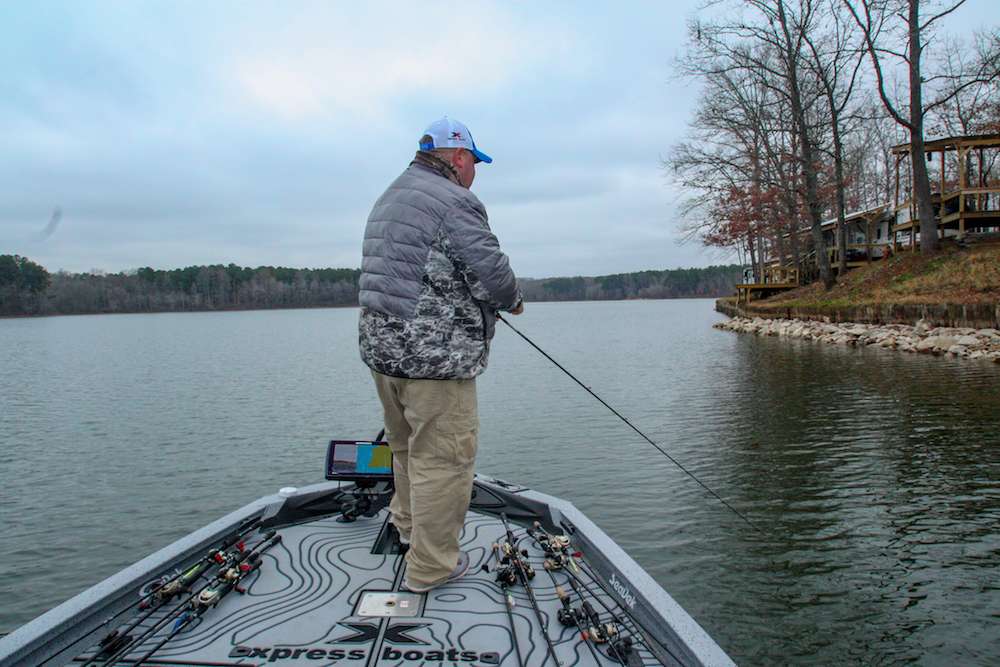
1 HOUR LEFT1:03 p.m. Lowen cranks a nearby seawall.1:07 p.m. The east wind has picked up and itâs brutally cold as Lowen cranks a shorty off the seawall.
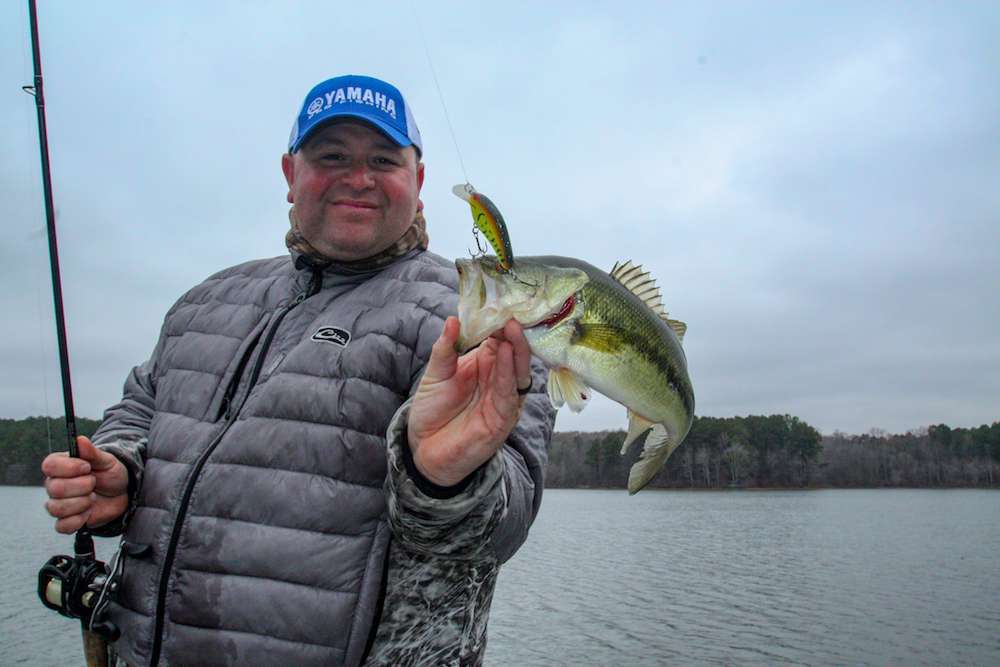
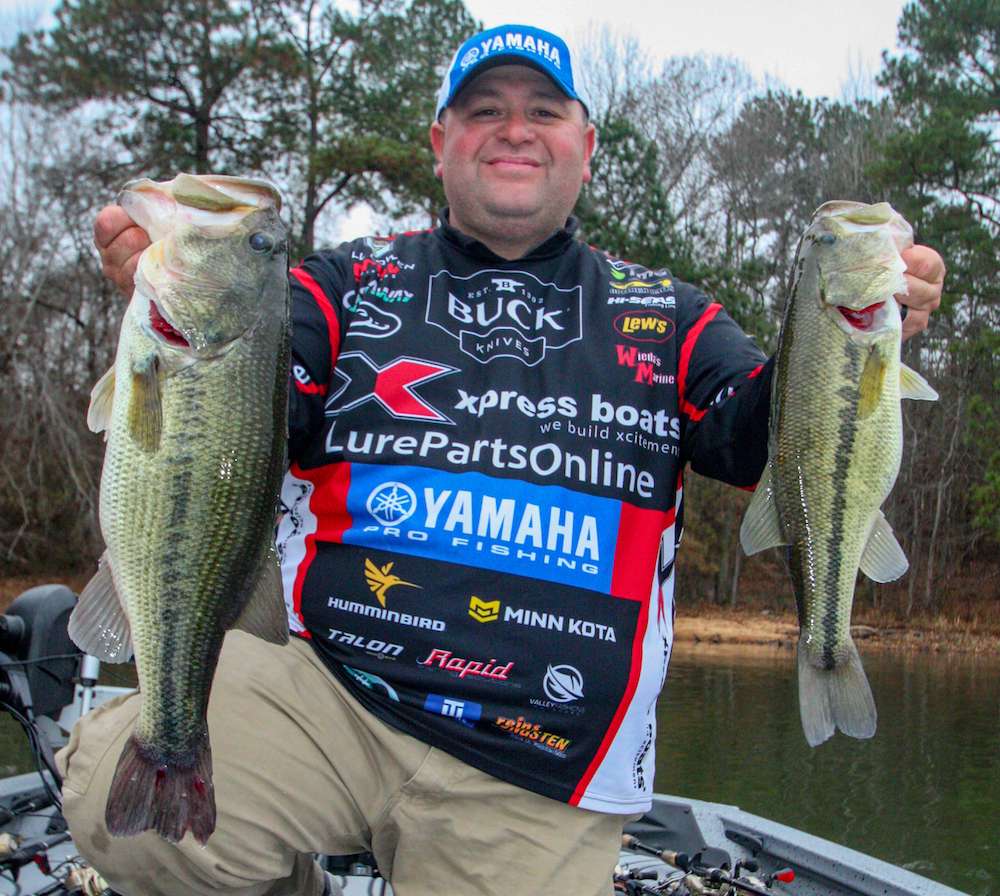
âThe fish were really lethargic today, but by employing a slow, patient approach, I was able to score a limit that included my biggest bass of 2018,â Lowen told Bassmaster. âPoints and rocks either in or near deep water produced all of my keepers. If I were to fish here tomorrow, Iâd stay with the jerkbait and flat crankbait and spend more time cranking than I did today.â
WHERE AND WHEN BILL LOWEN CAUGHT HIS KEEPER BASS
7 pounds, 1 ounce; Table Rock shad pattern Megabass Vision 110 jerkbait; deep point; 9:58 a.m.
1 pound, 12 ounces; chartreuse mudbug pattern PH Custom Lures Dollar Bill flat-sided crankbait; dam riprap; 11:18 a.m.
1 pound, 3 ounces; same lure as No. 2; rocks on channel bank; 12:57 p.m.
1 pound, 1 ounce; same lure as No. 2; shallow point; 1:16 p.m.
3 pounds, 12 ounces; same lure as No. 2; same place as No. 4; 1:23 p.m.
TOTAL: 14 POUNDS, 13 OUNCES
